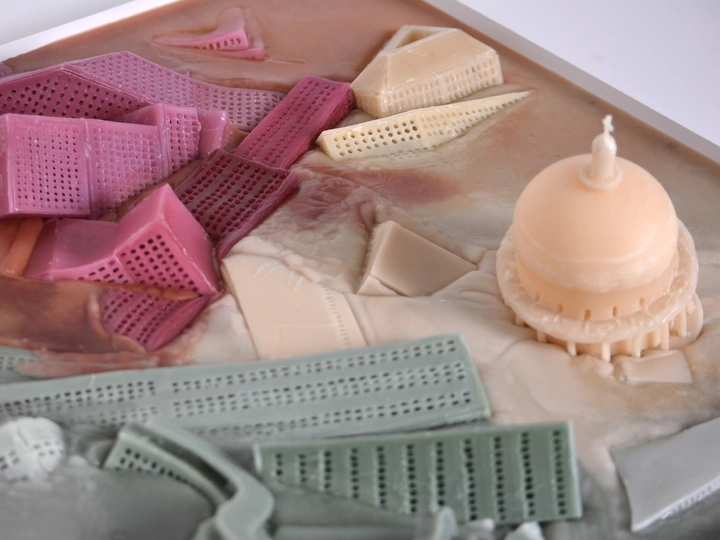Building (in) a post-oil future

Saint-Affrique is a French architect, sculptor and writer. Born in the U.S. in 1996, he has since travelled the world, living successively in Dijon, Budapest, The Hague, Moscow, London, Lausanne, Stockholm, Rome, Rotterdam, Zürich and Paris before recently settling in Brussels where he now lives and works.
Throughout his career, he has worked in renowned architecture firms such as Studio Noun, Atelier Pascal Gontier, Jägnefält Milton, and 2A+P/A where ecological considerations have always been central to his architectural approach. Notably, at Studio Noun, he has built houses in full wood system, where structure, insulation and finishes are done with one single material: a glueless assembly of 10 layers of wood.
Now an independent architect, Saint-Affrique focuses on revitalizing rural architectural heritage in southern France, exploring the potential of natural and locally sourced materials. Since a year, Saint-Affrique practices also as a sculptor, exhibiting mainly in Belgium. His art work remains marked by reflections about architecture, the urban condition and materials at a time of depletion of raw materials and energy crisis. He mainly works with wax, a byproduct of petrol to explore the critical dependence of our societies on oil.
For two centuries we thrived on cheap and abundant fossil fuels that reshaped the face of our world and way of life. Oil in particular has become essential in all sectors including architecture but poses a twofold challenge today:
The environmental crisis stems from extensive oil use. To avoid severe climate change my generation must transition away from oil. Regardless of ecological concerns, we will be forced to break free from oil due to physical realities: since 2008 global oil production peaked and we extract less and less oil. For every barrel we discover we consume six. Given Earth’s finite nature, the decline of oil resources is inevitable.
We must seriously consider a future with limited (if not depleted) oil supplies. Are we prepared? Oil and architecture are so intertwined that imagining oil-free architecture is difficult. Heating, electricity, car-dependent towns, construction vehicles, materials derived from oil—insulation, pipes, window frames—or dependent on its energy density—metals, concrete, glass—all rely on oil. Our task is immense: untangling architecture from oil.
Since fall 2022 I've explored this issue on two fronts. First, I analyzed the objective facts: Where is oil used in the production and transport of building materials, construction processes and operation of buildings? Can we genuinely replace oil by another energy? Then I speculatively asked myself: What would oil-free architecture look like? How would urban planning, materials, machines, labor, energy, and lifestyles change? Which building practices should we invest in for an oil-less future?
Our generation will inevitably face these challenges. The research I have initiated aims to serve as a foundation for open discussions, encouraging to develop critical awareness, envision architecture that is resilient for the future and foster new ways of living without relying on fossil fuels. Those who invest in this topic will be prepared for the energy-constrained world ahead.